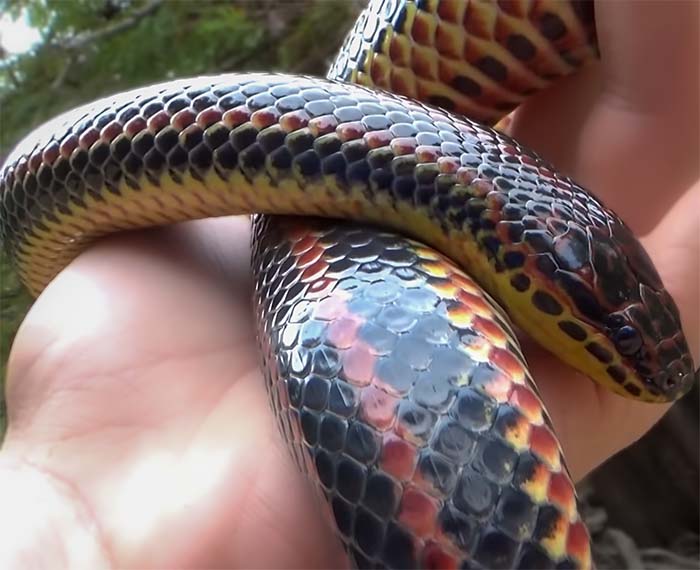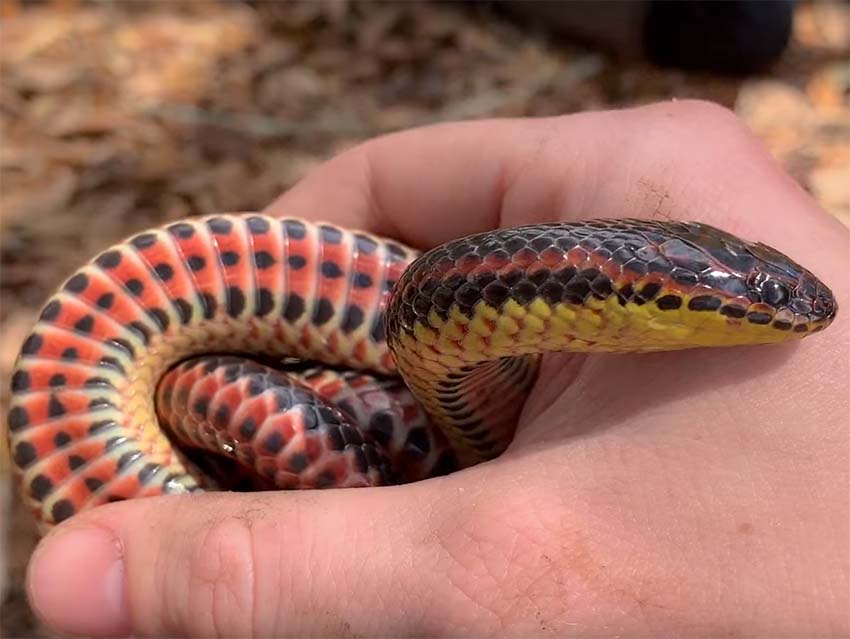
- Scientific Name
- Farancia erytrogramma erytrogramma
- Range
- Eastern Virginia
- Also Known As
- Horn Snake, Red Swamp Snake
- Venomous
- No
- Features
- Bluish-Black Body With 3 Red Stripes
- Prey
- Eels, Amphibians, Small Lizards
- Litter Size
- 20 Eggs per Birth
- Life Span
- Unknown Est. 19 Years
- Length
- 36 - 48 Inches
Quick Links for Common Rainbow Snake
Common Rainbow Snake Description
Common Rainbow Snake Appearance
The main body of the snake is a glossy bluish-black with three red stripes. These snakes have rather short tails with a spiny tip which they use to prob prey. Adults will show yellow coloration on the head, along the sides, and on their belly.
Size
This snake is usually between 36 to 48 inches long, however, the record length for this snake is about 66 inches.
Juveniles tend to be 7 to 9 inches long.
Common Rainbow Snake Behavior
These snakes are very rarely seen due to their secretive behavior. They spend most of their lives in the water hiding in vegetation and other forms of cover. However, they do come out to move locations or hunting if there’s no prey, and are seen outside the water during rainy summer nights.
These snakes are not aggressive and do not bite when held.
It is illegal in Virginia to keep Wild Snakes as pets
Range and Habitat of The Common Rainbow Snake
Range
These snakes can be found found in Eastern Virginia, but can sometimes be found outside their range. These snakes’ range extends all the way down to Louisiana sticking close to the Atlantic Ocean, never venturing far inland. Southern Maryland is it’s furthest northern range.
Habitat
These snakes prefer streams, swamps, marshes and bodies of brackish water. They prefer to hide in the vegetation within them, and sometimes burrow in the sand or mud at the edges of streams.
Diet of Common Rainbow Snake
Rainbow Snake’s diet is primarily of Eels. Which is why they are sometimes called Eel Moccasins. These snakes do not constrict their prey, but prefers to swallow them whole.
Reproduction and Young
Reproduction
Not much is known about the reproductive habits of these snakes. However, they lay between 20 – 40 eggs in late June through July.
Eggs and Young
One nest is observed to be in a cavity below the surface, about 10 cm deep and 15 wide.
The juveniles when born have the same colors and markings as the adults. These juveniles tend to be 7 to 9 inches long.


